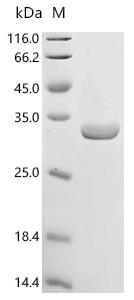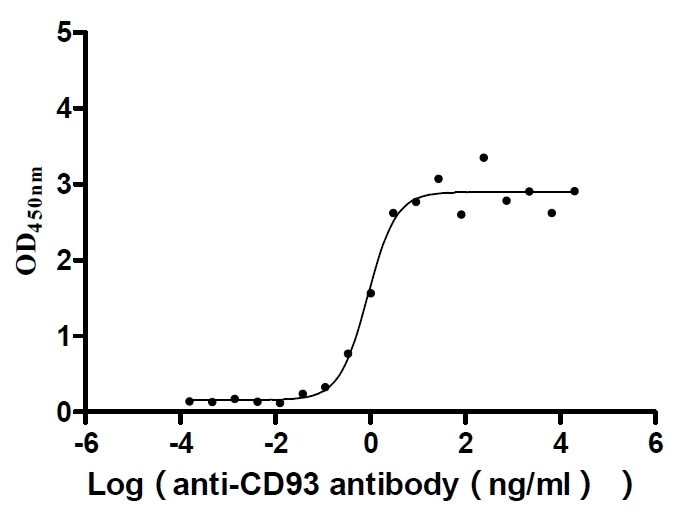Recombinant Human Lon protease homolog 2, peroxisomal (LONP2), partial
-
中文名稱:Recombinant Human Lon protease homolog 2, peroxisomal (LONP2), partial
-
貨號:CSB-EP803134HU1
-
規(guī)格:¥1344
-
圖片:
-
其他:
產(chǎn)品詳情
-
純度:Greater than 95% as determined by SDS-PAGE.
-
生物活性:Not Test
-
基因名:LONP2
-
Uniprot No.:
-
種屬:Homo sapiens (Human)
-
蛋白長度:Partial
-
來源:E.coli
-
分子量:30.7 kDa
-
表達區(qū)域:2-264aa
-
氨基酸序列SSVSPIQIPSRLPLLLTHEGVLLPGSTMRTSVDSARNLQLVRSRLLKGTSLQSTILGVIPNTPDPASDAQDLPPLHRIGTAALAVQVVGSNWPKPHYTLLITGLCRFQIVQVLKEKPYPIAEVEQLDRLEEFPNTCKMREELGELSEQFYKYAVQLVEMLDMSVPAVAKLRRLLDSLPREALPDILTSIIRTSNKEKLQILDAVSLEERFKMTIPLLVRQIEGLKLLQKTRKPKQDDDKRVIAIRPIRRITHISGTLEDEDED
Note: The complete sequence may include tag sequence, target protein sequence, linker sequence and extra sequence that is translated with the protein sequence for the purpose(s) of secretion, stability, solubility, etc.
If the exact amino acid sequence of this recombinant protein is critical to your application, please explicitly request the full and complete sequence of this protein before ordering. -
蛋白標簽:C-terminal Flag-tagged
-
產(chǎn)品提供形式:Liquid or Lyophilized powder
Note: We will preferentially ship the format that we have in stock, however, if you have any special requirement for the format, please remark your requirement when placing the order, we will prepare according to your demand. -
緩沖液:If the delivery form is liquid, the default storage buffer is Tris/PBS-based buffer, 5%-50% glycerol. If the delivery form is lyophilized powder, the buffer before lyophilization is Tris/PBS-based buffer, 6% Trehalose, pH 8.0.
-
復(fù)溶:We recommend that this vial be briefly centrifuged prior to opening to bring the contents to the bottom. Please reconstitute protein in deionized sterile water to a concentration of 0.1-1.0 mg/mL.We recommend to add 5-50% of glycerol (final concentration) and aliquot for long-term storage at -20℃/-80℃. Our default final concentration of glycerol is 50%. Customers could use it as reference.
-
儲存條件:Store at -20°C/-80°C upon receipt, aliquoting is necessary for mutiple use. Avoid repeated freeze-thaw cycles.
-
保質(zhì)期:The shelf life is related to many factors, storage state, buffer ingredients, storage temperature and the stability of the protein itself.
Generally, the shelf life of liquid form is 6 months at -20°C/-80°C. The shelf life of lyophilized form is 12 months at -20°C/-80°C. -
貨期:Basically, we can dispatch the products out in 3-7 working days after receiving your orders. Delivery time may differ from different purchasing way or location, please kindly consult your local distributors for specific delivery time.
-
注意事項:Repeated freezing and thawing is not recommended. Store working aliquots at 4℃ for up to one week.
-
Datasheet & COA:Please contact us to get it.
相關(guān)產(chǎn)品
靶點詳情
-
功能:ATP-dependent serine protease that mediates the selective degradation of misfolded and unassembled polypeptides in the peroxisomal matrix. Necessary for type 2 peroxisome targeting signal (PTS2)-containing protein processing and facilitates peroxisome matrix protein import. May indirectly regulate peroxisomal fatty acid beta-oxidation through degradation of the self-processed forms of TYSND1.
-
基因功能參考文獻:
- Findings suggest that LONP2 promotes cervical tumorigenesis via oxidative stress. PMID: 29502128
- The proteolytic activity of oligomeric Tysnd1 is in turn controlled by self-cleavage of Tysnd1 and degradation of Tysnd1 cleavage products by PsLon. PMID: 22002062
- Lon recognizes specific surface determinants or folds, initiates proteolysis at solvent-accessible sites of MPPalpha and StAR, and generates unfolded polypeptides that are then processively degraded PMID: 15870080
-
亞細胞定位:Peroxisome matrix.
-
蛋白家族:Peptidase S16 family
-
組織特異性:Widely expressed, with high levels in the liver, kidney and pancreas.
-
數(shù)據(jù)庫鏈接:
Most popular with customers
-
Recombinant Human Complement component C1q receptor (CD93), partial (Active)
Express system: Mammalian cell
Species: Homo sapiens (Human)
-
Recombinant Human Dickkopf-related protein 1 (DKK1) (Active)
Express system: Mammalian cell
Species: Homo sapiens (Human)




-AC1.jpg)









